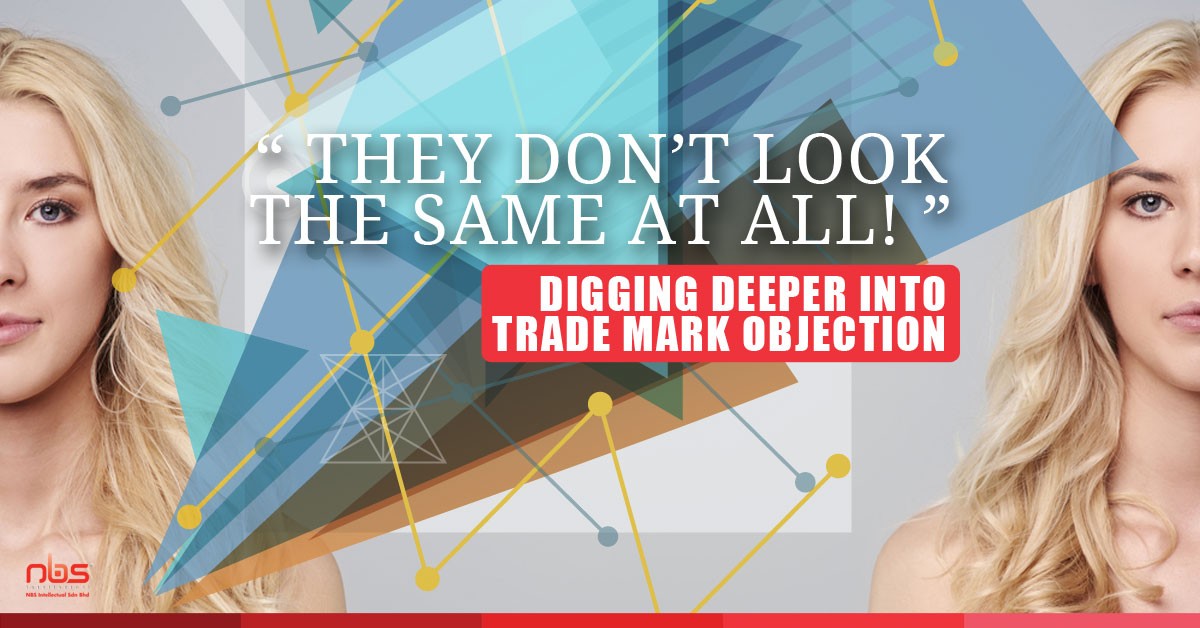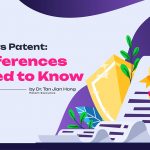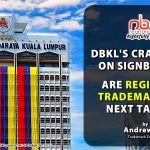In my previous article I have discussed and analyzed various grounds of objection which could potentially be raised by the examiner during the course of first stage examination of trade mark. Today I am going to further reveal yet another favorite ground of objection raised by the examiner against your application – likelihood to cause deception and confusion.
Majority of the applicant upon receiving the CD 70 Objection letter from the Registry would undoubtedly had no idea what on earth is the letter talking about as the letter would not explain to you what has actually gone wrong with your application. The letter would simply cite the relevant section and provide a specific period for you to file your response, end of story. Taking an example from my previous article, the subject mark “JUICY APPLE SWEET” is objected under Section 10(1)(d) & (10)(1)(e), kindly respond within two(2) month time should you are not satisfactory with the above decision. How would a person respond to that without first having the relevant knowledge in the relevant field?!
Responding to Section 10 objections considers to be an easy task provided sufficient distinctive evidence are provided. The same approach will not be applicable when responding to deception or confusion based objections as it requires the responder or appeal drafter to further analyze and compare the differences (if any) between the subject mark and the cited mark(s) cited by the examiner. In some rarer cases, no cited mark is provided but the objection is based solely on sections where the examiner opines that registration of the mark would undoubtedly cause deception or confusing amongst public. These grounds are enforced and used by the examiner under Section 14 and Section 19 of the Trade Marks Act 1976 and I will further break down below on what needs to be taken into account when dealing with objections raised under these sections.
When dealing with objection based on deception and confusion due to the existence of other prior mark, 3 factors would need to be taken into account while making comparison. These factors are commonly known as the visual comparison, the aural comparison, and the conceptual comparison. It may sound and look easy on the surface but believe me when I am telling you this, it is not as easy as it looks. Of course in some flat out straightforward cases where the prior mark(s) cited by the examiner is so different and unreasonable, simple comparison would suffice to overcome the objection. However, when dealing with substantial similarity, arguments using Court’s precedents, normally known as common law, may need to be referred to within the submission in order to persuade the examiner to accept our view. The said approach is used on a case by case basis as not all precedents are applicable depending on the nature of the mark applied.
Visual Comparison
As stated above, visual comparison means the differences which caught the eye of a reasonable observer and it should be sufficiently apparent whereby no deception and/or confusion would arise in light of the differences. The comparison are usually made using the distinct dominant features of the marks and for obvious reasons, the more obvious the differences are, the less likely for occurrence of deception and confusion. Minor differences such as font style, font size, and even colour is immaterial whilst making comparison.
Aural Comparison
What it sounds like, the marks being compared should read and pronounce differently in order to avoid confusion. As such, the syllable of a particular word and the means of pronunciation would generally be taken into account. This particular factor shall be disregarded in case of a device or logo mark as it cannot be read and pronounce. In general, the prefix of a word mark is more distinctive than its suffix.
Conceptual Comparison
One of the most important factors to be considered is the concept of the subject mark. The easiest way to make such comparison is via the specification of goods and services. Occasionally, examiner would object to marks based on prior marks from other classes which are totally irrelevant to the preferred class. In such cases, submission should therefore focus on the conceptual comparison in order to overcome the objection as the compared marks come under different industry or field.
The purpose of making the above comparison is to demonstrate the distinguishing ability of the applied mark and to prove to the examiner that registration of the applied mark would not cause deception and/or confusion within the general public. The above comparison also applied to unregistered well-known marks where an objection on confusion can also be based upon. Of course, I’m afraid that the comparisons will not work if the applied mark is an obvious imitation of a well-known mark which entitled protection under the Paris Convention.
Likelihood to Cause Deception and/or Confusion without a Prior Mark
There are cases where a mark would face such an objection without prior or well-known marks being cited within the examiner’s letter. Reason for such an occurrence would be either the applied mark has been in used wildly or it coincidentally resembles to a well-known entity. The earlier factors means that the applied mark has been in used by the public for a substantial period of time and it constitutes no direct reference or descriptive towards the goods and services represented. The latter being a mark which resembles a particular name or design of a famous entity in Malaysia or anywhere else in the world where it could confuse the public into thinking the applied mark belongs to that entity. The famous name or design is not necessarily a registered trade mark.
A good example to illustrate the above objection is the word “EMOJI”. Yes, the famous emoticon that is wildly in use in daily life. Almost everyone in the world would know of the word “EMOJI” and would undoubtedly link the word to thousands of different kinds of expressional icons. The word is obviously distinctive in almost all 45 classes of goods and services for trade mark and is obviously an invented word which has no apparent English meaning. Therefore, it shall deem to be registerable under Section 10 of the Act. However, the word “EMOJI” could also be potentially objected under Section 14 alone as it may also confuse the public into thinking the entity which creates EMOJI has extended its business in let say a Class 43 services for food and beverages services etcetera. Don’t get me wrong, the word “EMOJI” can be registered if sufficient distinctive character has been input within. As such, if your applied marks fit this category, you best be prepared for a whole lot of appeal and hearing.
That marks the end of the topic for potential objections which could raise by the Registry during examination. Moral of the story, if you cannot handle the appeal on your own, get professional help or advise immediately as you’ve got only 2 month response time. As…
THEY MAY APPEARED TO BE THE SAME BUT THEY ARE ACTUALLY NOT THE SAME
If you need to know more about the trademark registration process or questions,
Please Contact Us: 03-58914846
Or Email Us: [email protected]
Website: www.nbs.com.my
©ANTHONY THAY OF NBS INTELLECTUAL SDN. BHD.
ALL RIGHTS RESERVED







Comments are closed.